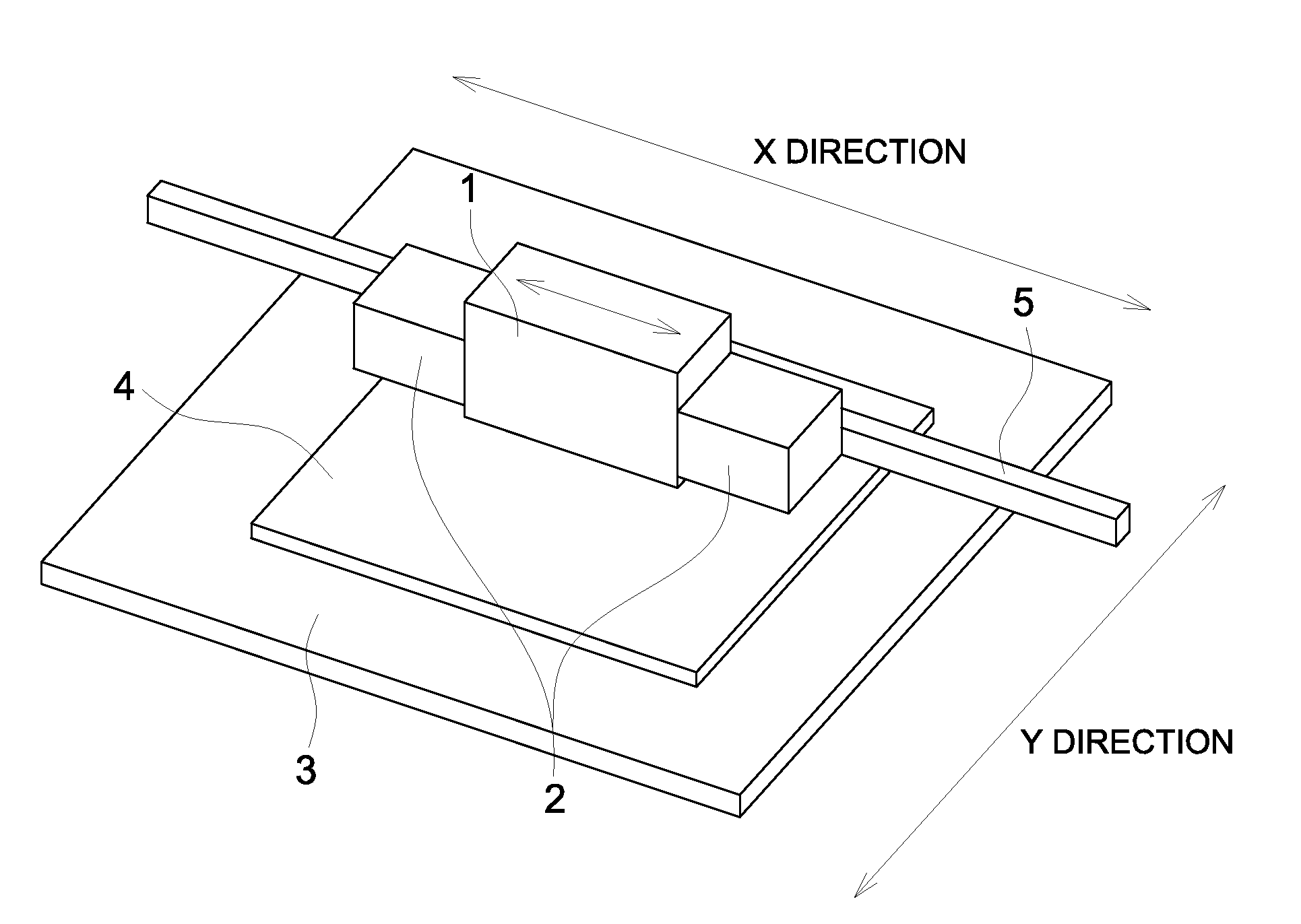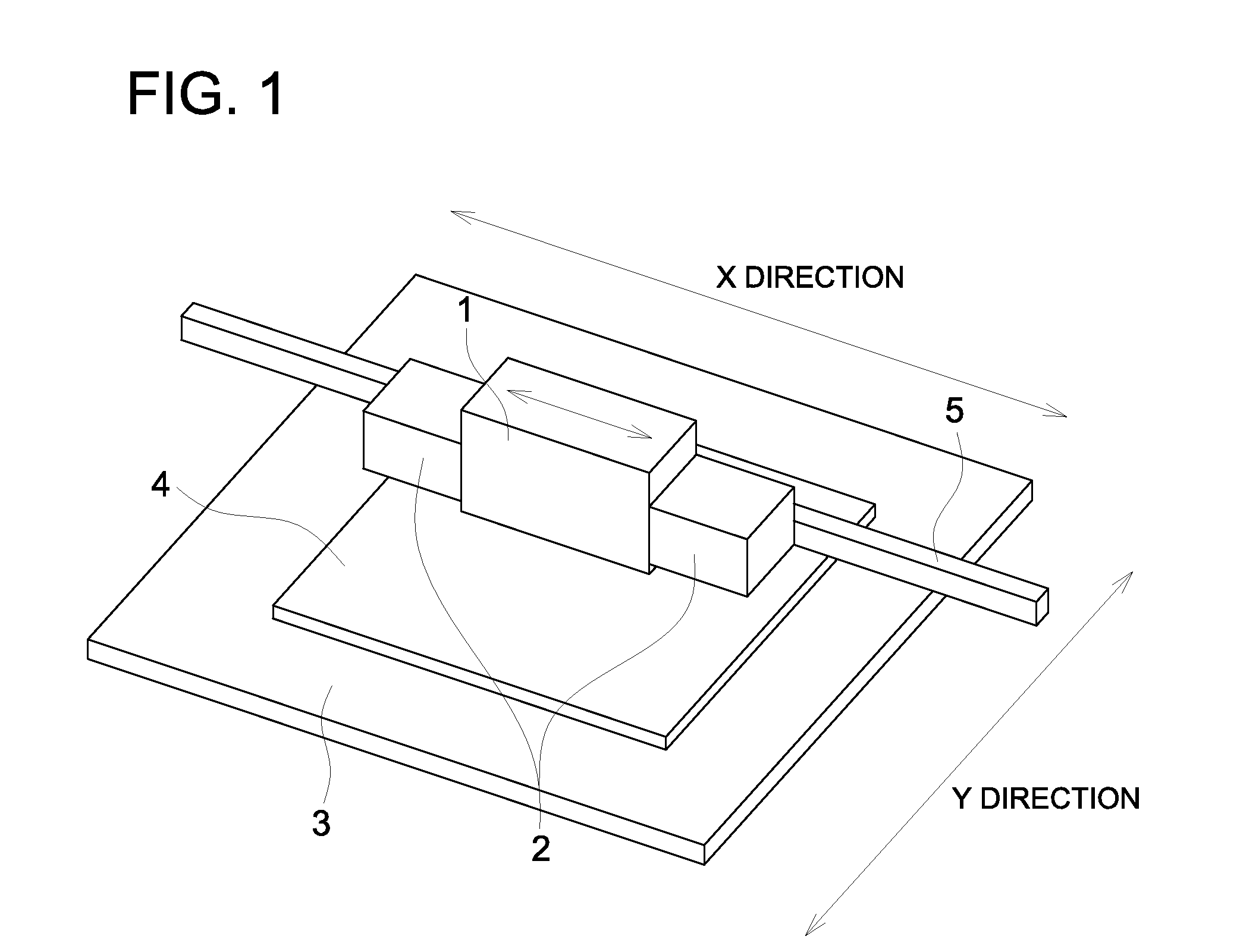Ink-jet platemaking method
a platemaking and inkjet technology, applied in the field of inkjet platemaking methods, can solve the problems of insufficient printing durability, high cost of exposure devices, and high image formation requirements, and achieve the effects of improving ink gathering, high manufacturing efficiency of ink-jet methods, and high printing durability
- Summary
- Abstract
- Description
- Claims
- Application Information
AI Technical Summary
Benefits of technology
Problems solved by technology
Method used
Image
Examples
example 1
>
[0125]A reaction container was charged with 56 g of glycidyl methacrylate, 48 g of p-hydroxybenzaldeyde, 2 g of pyridine, and 1 g of N-nitroso-phenylhydroxyamine ammonium salt, then, the mixture was stirred for 8 hours in a water bath of 80° C.
[0126]Subsequently, 45 g of saponified polyvinyl acetate, having a polymerization degree of 300 and a saponification rate of 88%, was dispersed in 225 g of ion-exchanged water, and then 4.5 g of phosphoric acid and p-(3-methacryloxy-2-hydroxypropyloxy)benzaldehyde, having been prepared via the above reaction, were added to the resulting solution in such a manner that the modification rate was allowed to be 3 mol % based on polyvinyl alcohol, then, the mixture was stirred at 90° C. for 6 hours. The thus-prepared solution was cooled to room temperature, and 30 g of a basic ion-exchange resin was added, followed by being stirred for 1 hour. Then, the ion-exchange resin was filtered, and IRUGACURE 2959 (produced by Ciba Specialty Chemicals, Ltd.)...
example 2
>
[0166]Commercially available resin particles J780 (Joncryl 780, made by BASF Co., MFT (water): 89° C., acid value: 46 mg KOH / g), J631 ((Joncryl 631, made by BASF Co., MFT (water): 80° C., acid value: 25 mg KOH / g), NM972 (Nichigo-Mowinyl 972, made by Japanese synthetic-chemistry Co., Ltd., MFT (water): 105° C., acid value: 2 mg KOH / g) each were diluted with ion-exchanged water so that the solid portion became 10%. Then, desalt purification was performed using a small type pump unit of Membrane Master RUM-2 and a thin layer flow flat membrane test cell of Membrane Master C10-T (made by Nitto Denko Co., Ltd.). At this moment, the counter salt was substituted by an amine salt and an alkali metal by adding respectively suitably excessive amounts of an aqueous ammonia solution or alkali metal chloride and ion exchange water. Desalting purification was performed for a sufficient time after adding ammonia or an alkali metal chloride, and each resin particle solution in which the counter sa...
PUM
| Property | Measurement | Unit |
|---|---|---|
| boiling point | aaaaa | aaaaa |
| boiling point | aaaaa | aaaaa |
| boiling point | aaaaa | aaaaa |
Abstract
Description
Claims
Application Information
 Login to View More
Login to View More - R&D
- Intellectual Property
- Life Sciences
- Materials
- Tech Scout
- Unparalleled Data Quality
- Higher Quality Content
- 60% Fewer Hallucinations
Browse by: Latest US Patents, China's latest patents, Technical Efficacy Thesaurus, Application Domain, Technology Topic, Popular Technical Reports.
© 2025 PatSnap. All rights reserved.Legal|Privacy policy|Modern Slavery Act Transparency Statement|Sitemap|About US| Contact US: help@patsnap.com



